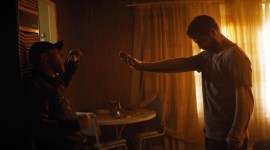
How to Cut an Effective Trailer for Your Next Film or Video
A good trailer can be one of the strongest marketing tools for your film or video, but a bad one can tank the project altogether.
Trailers have come a long way. From long pieces that basically revealed the entire story and would “trail” after the end of a movie, to fast-paced, high-energy videos with multiple (and more revealing) edits released as the film drew closer to release. The trailer is perhaps the film studio’s best marketing tool, and it can make or break box office sales. So how do you cut an effective trailer?
First, some examples. The studios didn’t know how to market The Princess Bride in their trailers, so it didn’t do well in the theater, but it developed a cult following and has a 97% score at Rotten Tomatoes. On the other hand you have Suicide Squad, which has a 27% score at Rotten Tomatoes but made just under $750 million worldwide (about a $430 million profit).
I’m sure the studios weren’t too pleased with the negative reviews that Suicide Squad received, but thanks to what is arguably an amazing trailer, they managed to get people in the theater and make a ton of money.
Trailers are a competitive medium now. The more exciting and gripping a trailer is, the more likely a viewer is to show it their friends — or a YouTube channel will create a “react” or “trailer breakdown.”
So what makes a good trailer?
Build Hype
First and foremost, you need to excite your audience. Sure, that seems obvious, but there’s a difference between just informing your audience about a new movie coming out and getting them so hyped that they’d do anything to see that movie right now! When the teaser trailer for Andy Muschietti’s IT came out, a friend told me “I’d pay $200 to see IT right now!” That’s what you want your trailer to achieve. You need to present your film as more than just something to watch. It needs to be something to be a part of.
Why does this teaser work so well? It builds suspense and hype. It sets its tone with beautiful-yet-eerie music as we follow little Georgie to the storm drain where we only briefly see Pennywise. We wonder “Who is this clown, and why is he down there?” We need answers, but we only get hints. And what chance could these children stand against something like this? We need to know.
IT’s trailer does not simply inform us that there’s a monster clown running amok in Derry, Maine. Instead; it takes us down a few steps of the journey, giving us just enough information to want more. The principles for building suspense in a trailer are relatively the same for a film, just in a shorter time frame. (For more on this topic, check out this article.)
We want to talk to our friends about this movie. We want to post in on social media before anyone else does. It’s something to be a part of.
Music and Editing
Who doesn’t love Queen’s “Bohemian Rhapsody?” It’s fun, catchy, beautifully composed, and nearly everyone knows all the lyrics. Suicide Squad used it so well in their original trailer. The footage is cut wonderfully with the musical cues, and for some shots, the editors even timed the gunshots with the music. It contrasts with the dark imagery but complements the quirky dialogue to really say that “This movie is going to be intense and dark, but ultimately, it’ll be really fun!”
However, not every trailer can support a popular song, whether it’s a minor key cover (as with Avengers: Age of Ultron), or Led Zeppelin’s “Immigrant Song” in the trailer for Thor: Ragnarok. Handled poorly, a popular song in your trailer can make your film fail to stand out.
Either way, the key factor is still music. You only have so much time to communicate with your audience about your film. Whether it’s a pop song, an instrumental, or music from the film’s original score, you need to make sure the music you choose helps an audience unfamiliar with your project get excited (or scared, or angry . . .) about what they’re seeing. You don’t need a song that captures The Essence of the movie — you need something that makes them want to see it.
No Spoilers!
Don’t ruin the plot twist of your own movie! Don’t give away key moments, or the best jokes, or the coolest details.
The trailer for Terminator: Genisys ruins what could have been a really cool plot twist. Granted, the movie itself was terrible, but at least audiences would have been somewhat surprised and entertained had the trailer not spoiled the movie. That could have helped with hype post-release.
Genisys isn’t the only trailer that’s guilty of this. Many trailers end up giving too much of the film away — revealing too many set pieces, or jokes, or plot points. You need to give the audience just enough to make them want more. Introduce key characters, set up the conflict, and build hype.
Take a look at the original teaser for Mission: Impossible – Fallout. Not only does it use music well (both original score and music from a popular band), it also keeps us guessing. It reintroduces old characters and frames them as potential enemies. It makes us question our hero Ethan Hunt’s goals and intentions. And as for the action, it gives us a glimpse of beautifully choreographed fight scenes and amazing cinematography that captures not only mood and character but outrageous practical set pieces. It hits all the elements of a fantastic trailer, and it gets you hyped to re-experience the franchise.
So keep all this in mind when cutting a trailer for your next project. Make it an experience, make it cool, and keep a few tricks up your sleeve.
Cover image via Fer Gregory.
Looking for more articles on film and video production? Check these out.





